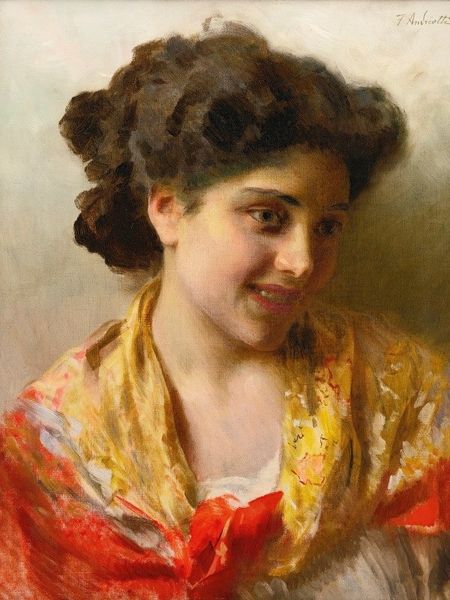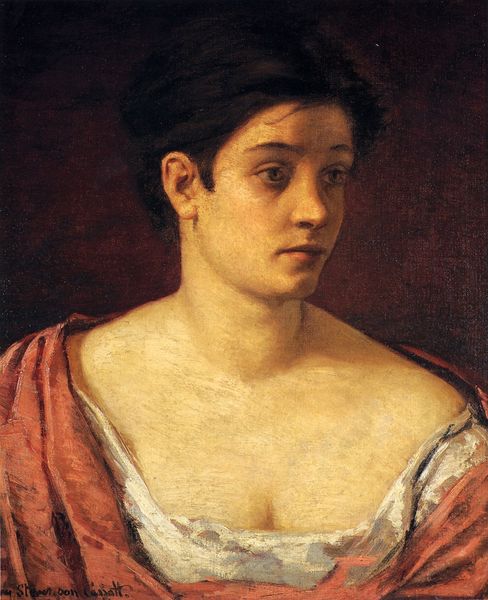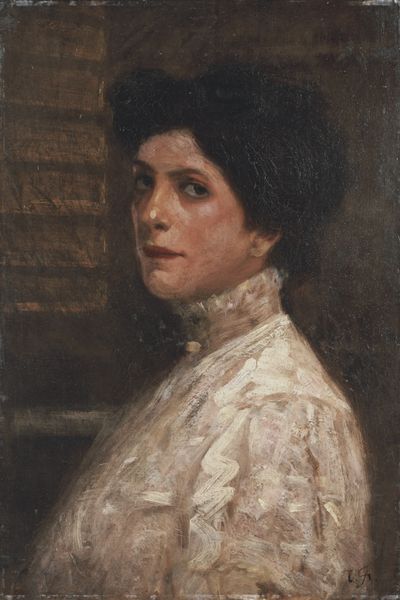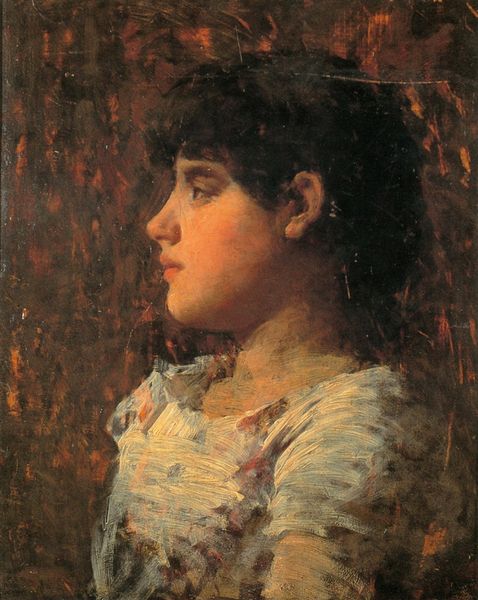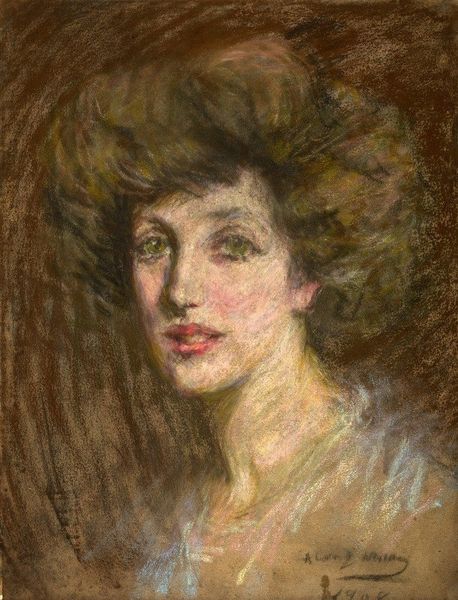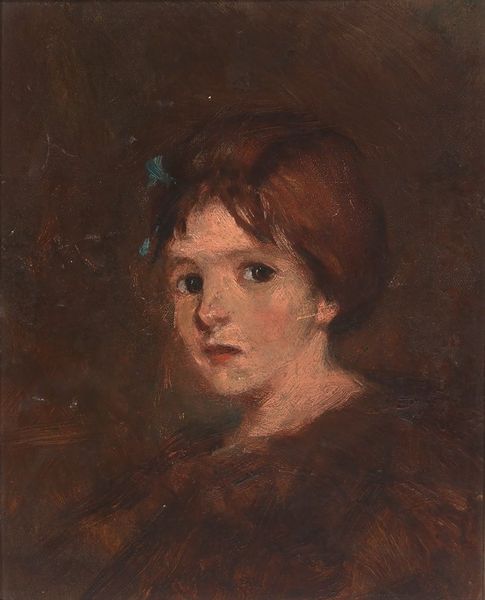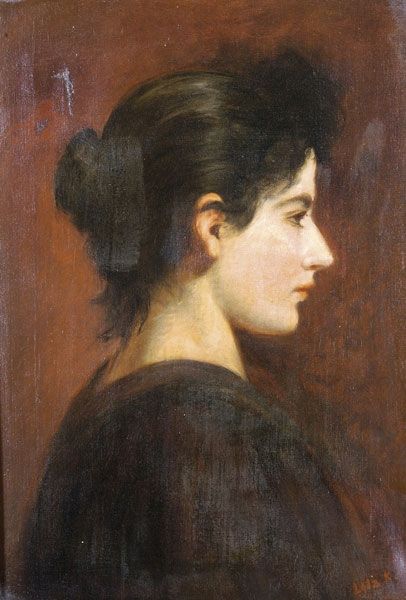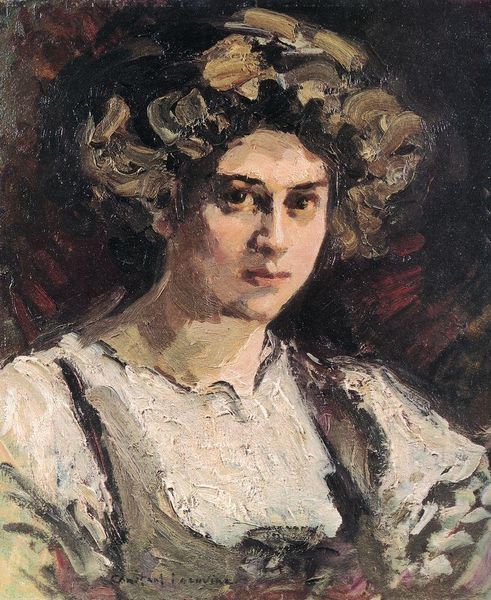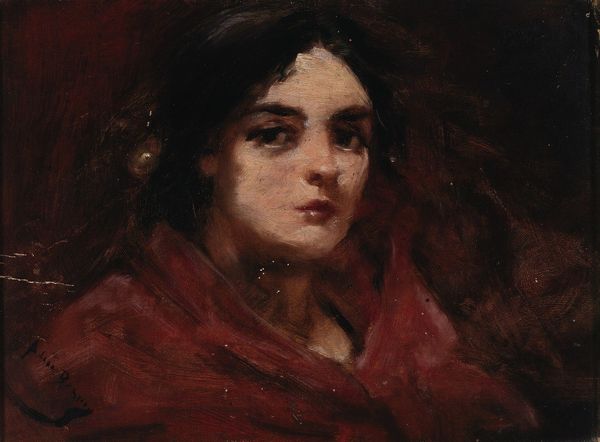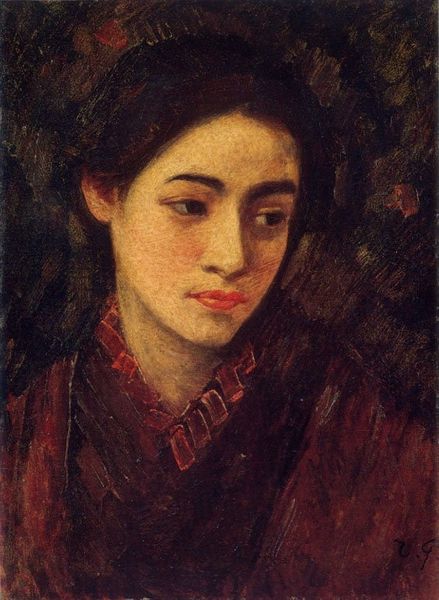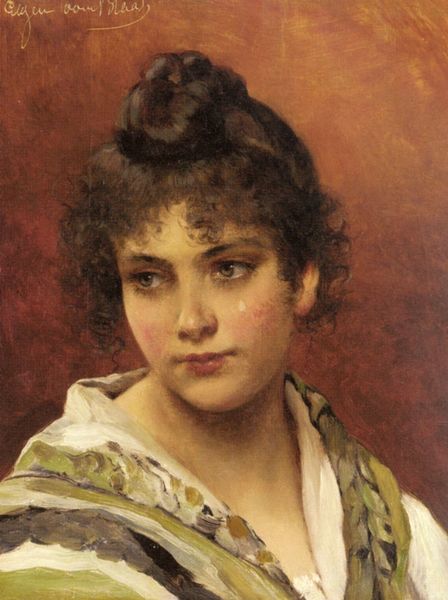
Copyright: Public domain
Editor: Here we have Robert Julian Onderdonk's "Portrait of Gertrude" from 1902, rendered with oil on canvas. I'm struck by how immediate the portrait feels, especially with the impasto brushstrokes defining her garment. How would you interpret this work? Art Historian: What catches my attention is the materiality of the paint itself, particularly how Onderdonk’s technique obscures the clear delineation of ‘high art’ portraiture. We need to look closely at the artistic labour – the physical application of oil paint and how the handling of the material communicates meaning. The loose brushwork hints at the speed and labor involved. Does it remind you of anything from its context, regarding manufacturing? Editor: I hadn’t thought of that angle. With your perspective, I'm starting to see parallels between this artistic approach and the increasing mechanization influencing society at the time. Were other artists exploring similar methods? Art Historian: Certainly, this aligns with the rise of impressionism and its focus on capturing fleeting moments through texture. Think of it in terms of the availability of pre-mixed paints in tubes; suddenly, artists could paint *en plein air*. This access directly impacted artistic production, moving art outside and transforming it, by creating the conditions that allowed mass participation in new aesthetic practices, as well as their consumption and distribution, reshaping notions of individual genius and opening it to different classes in new markets. So how might we examine this specific portrait within these frameworks of industrial change and artistic accessibility? Editor: This really broadens my understanding. I originally saw a simple portrait, but now I see a work shaped by evolving industrial capabilities and socio-economic trends that influenced what was being created at the time. Art Historian: Precisely. This deeper dive demonstrates how production circumstances significantly shape the aesthetic decisions and artistic products we see, and provides greater context, adding a lot to this 'simple' portrait.
Comments
No comments
Be the first to comment and join the conversation on the ultimate creative platform.
